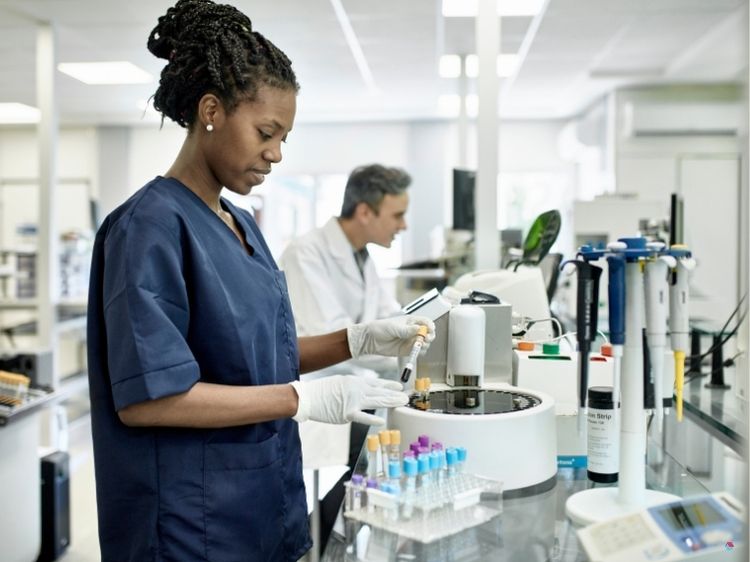Ever found yourself wondering what exactly happens after your doctor says, “Let’s run some tests”? Well, you’re about to dive into the world of pathology services, the unsung heroes behind those tests. Pathology services are more than just a step in your healthcare journey; they’re the cornerstone of modern medicine, providing insights that shape diagnosis and treatment. Fasten your seatbelt because we’re about to explore this fascinating world, making sure you get the lowdown on everything pathology-related.
Pathology services, though often flying under the radar, are integral to healthcare. They offer the critical analysis and insights necessary for diagnosing and treating a wide array of conditions. From simple blood tests to more complex biopsy analyses, pathology is the backbone that supports medical decisions, ensuring you receive the most accurate and effective care possible.
What Are Pathology Services?
Pathology services encompass the examination of samples of body tissues, including blood, urine, or biopsies, to diagnose disease. Pathologists, the doctors specialized in this field, use their expertise to identify abnormalities that indicate disease. Their findings are pivotal in crafting a treatment plan that’s just right for you.
The Key Roles of Pathology Services in Healthcare:
- Disease Diagnosis: Identifying diseases from the common cold to more serious conditions like cancer.
- Monitoring Health Conditions: Keeping an eye on chronic diseases and how they evolve over time.
- Preventive Care: Detecting early signs of conditions, allowing for preventive measures to be taken.
- Research and Development: Contributing to medical research, helping to develop new treatments and understand diseases better.
How Do Pathology Services Work?
The journey from sample collection to results is a fascinating one, involving several steps, each critical to ensuring accurate outcomes. Here’s a glimpse into the process:
- Collection: This is where your journey begins, with the collection of blood, tissue, or other samples.
- Processing: Samples are then prepared for analysis. This might involve staining slides for microscopy or preparing blood samples for testing.
- Analysis: The main event! Pathologists and laboratory technicians analyze the samples, looking for markers of disease.
- Reporting: The results are compiled into a report that goes back to your doctor, providing the insights needed to inform your treatment plan.
The Impact of Pathology Services on Patient Care
The role of pathology services in patient care cannot be overstated. They’re not just about running tests; they’re about offering a window into your health, guiding your healthcare journey every step of the way. Here are a few ways pathology services make a difference:
- Accurate Diagnosis: They’re the foundation of your treatment plan, ensuring diagnoses are precise.
- Tailored Treatment Plans: Insights from pathology services enable doctors to customize your treatment, ensuring you get exactly what you need.
- Improved Patient Outcomes: With accurate diagnosis and tailored treatment plans come better patient outcomes.
- Efficiency in Healthcare: By providing clear, actionable information, pathology services help streamline the healthcare process.
Navigating Pathology Services: Tips for Patients
Engaging with pathology services doesn’t have to be a daunting task. Here are a few tips to navigate these services smoothly:
- Understand the Process: Knowing what to expect can alleviate concerns and make the process smoother.
- Ask Questions: Don’t hesitate to ask your healthcare provider about the tests and what the results could mean.
- Follow Instructions: Ensure accurate results by following any preparation instructions for your tests.
- Stay Informed: Understanding your results empowers you to take an active role in your healthcare.
FAQs
What’s the difference between clinical and anatomic pathology? Clinical pathology focuses on the analysis of bodily fluids for diagnosis, while anatomic pathology involves examining body tissues, often through biopsies.
How long does it take to get results? It can vary, from as little as a few hours for some blood tests to a few weeks for more complex analyses, like certain biopsies.
Can I access my pathology results directly? Yes, in many cases, you can access your results directly through patient portals, but it’s crucial to discuss them with your healthcare provider for context and next steps.
Are pathology services covered by insurance? Generally, yes, but coverage can vary. It’s wise to check with your insurance provider and healthcare facility beforehand.
Summary
Pathology services are the linchpin of healthcare, providing the critical insights necessary for diagnosing and treating a myriad of conditions. They empower healthcare professionals to deliver precise, personalized care, improving patient outcomes and the efficiency of the healthcare system. By understanding and effectively navigating pathology services, patients can take an active role in their healthcare journey, making informed decisions alongside their healthcare providers.
In essence, pathology services don’t just run tests; they unlock the mysteries of your health, guiding your path to wellness with precision and care. So, the next time your doctor mentions running some tests, you’ll know exactly the heroes behind the scenes, working tirelessly to ensure your health and well-being.

